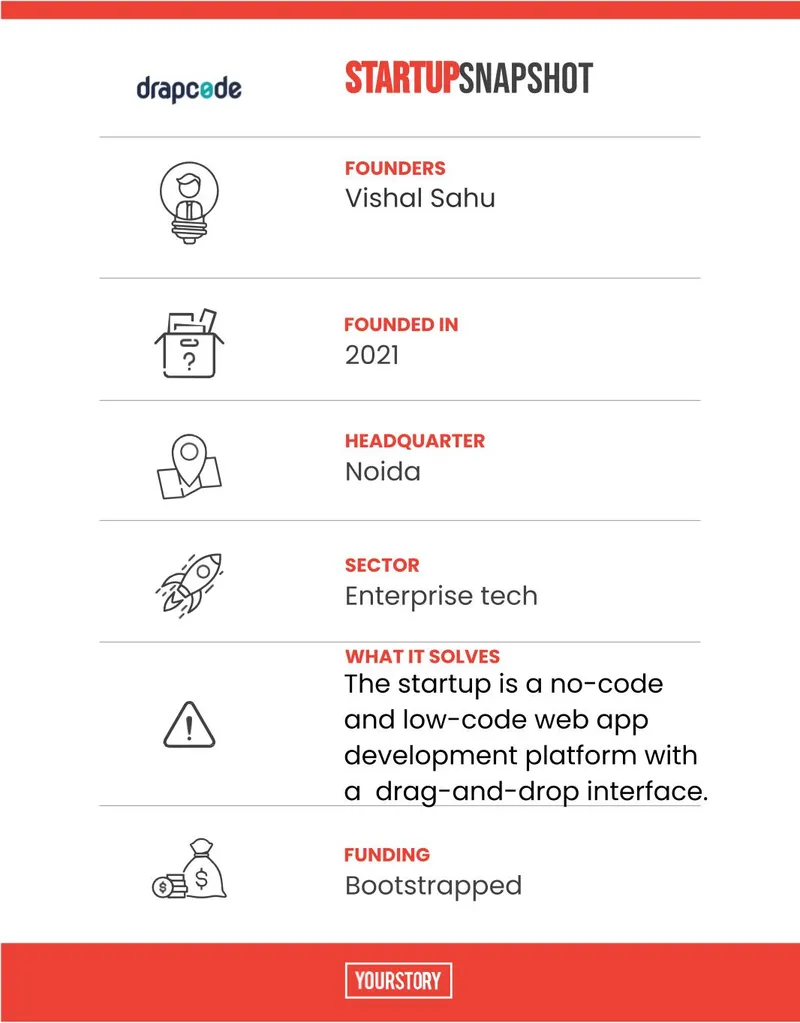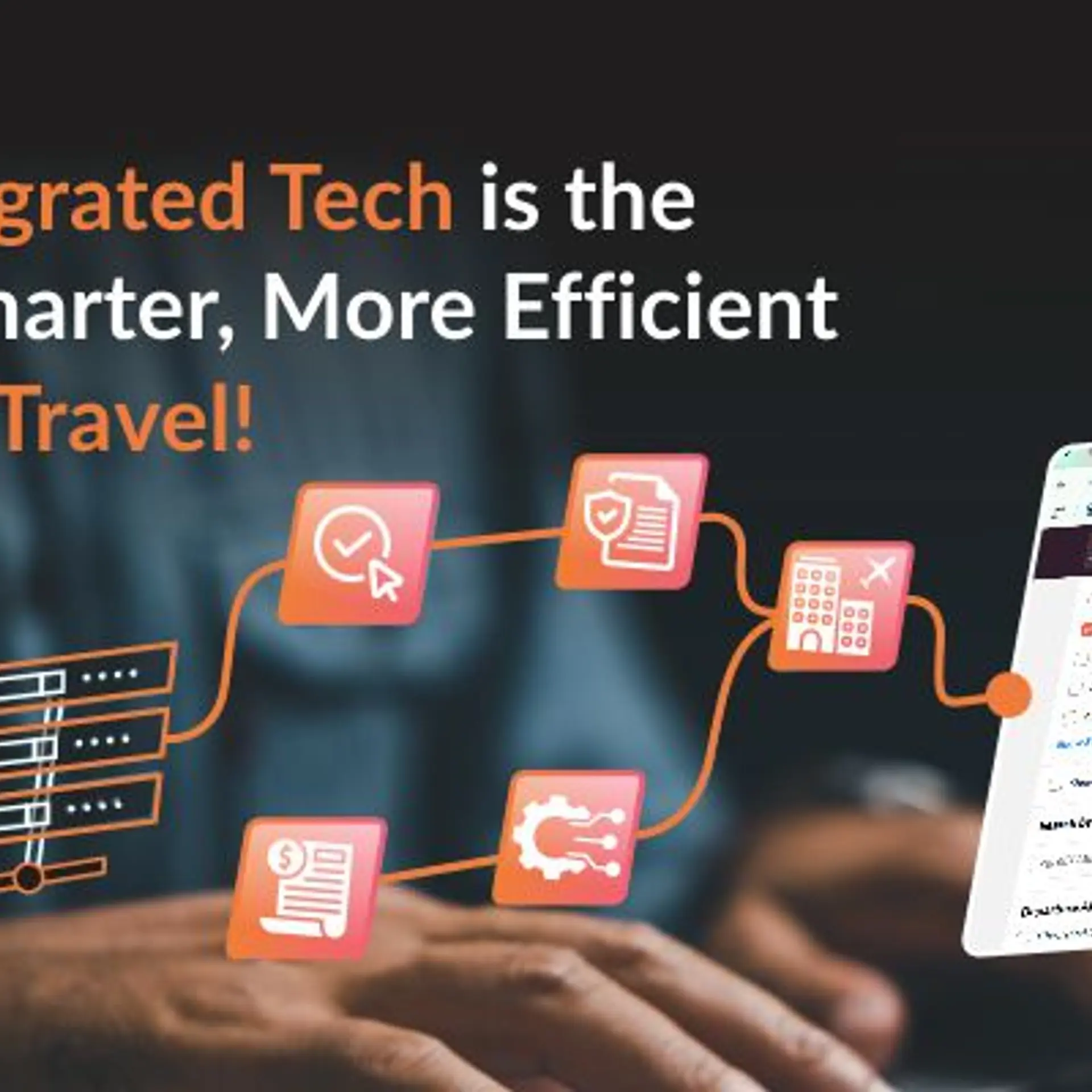[Tech50] 10 times faster, 10 times cheaper: How enterprise tech startup DrapCode is disrupting the no-code solutions space
One of YourStory’s Tech50 2021 startups, the brainchild of entrepreneur Vishal Sahu, DrapCode is engineering smart solutions for companies willing to adopt web applications fast and looking ahead at the $65 billion-opportunity future of no-code
Before building the Noida-based enterprise tech business to business (B2B) startup , Vishal Sahu, a BTech graduate, was already the founder of three startups.
On his fourth venture, the no-code web application development platform DrapCode, which is among YourStory’s Tech50 2021 list of most promising startups, he says, “The next decade would belong to the space of no-code solutions. This is already a buzzword, and we are just fulfilling that gap.”
But how did it all begin?
“I started my first business NexThoughts Software in 2013. The services company is still running and there are 30 people working on different projects. After building a lot of custom web applications for a period of two-three years, I realised that a lot of tasks are repetitive. For example, you build a Facebook login for one person and then after two months, you are building it again, and the cycle would continue,” recalls Vishal.
In 2016, Vishal built FintechLabs, a no-code platform especially for the lending industry. “So, here we built a lot of pieces for the lending industry where anyone could come, configure those pieces as per their needs and launch a full-fledged digital landing platform. I ran this company successfully for almost three and a half years as I bootstrapped it from a one-person team to a 35-member team to reach half a million revenue. In 2019, it was acquired by Bengaluru-based Perfios,” says Vishal.
The key takeaway for Vishal while his team would be engaged in rebuilding applications was that there was a need for no-code solutions. Since a lot of people don’t know anything about coding or programming, the core thought was that they should be able to build applications nevertheless.
“Given that I had already built something for the lending industry, it was more like a natural progression where I wanted to build something far more generic to me. Whether you want to launch a marketplace or an onboarding portal, DrapCode can enable you to do all of these,” shares Vishal taking us back through his journey.
It helped that Vishal is from a technology background and the fact that he had been working for the last seven-eight years worked to his advantage. The successful exit from his earlier venture gave him an opportunity to utilise his time and experience in building a more long-term platform like DrapCode.
Solving the constraints of time and cost
Problem solving and generating good feedback are crucial. Vishal recalls a recent conversation he had with an Indian MNC, one of the top 100 hundred Indian companies. They have an in-house team of developers and they are looking to build a portal which can manage the vehicles coming into and leaving their office premises. As of now, the company manages with a physical register where the vehicle log is maintained manually.
“They have hired two developers who will take four months to build the application. I asked them how much time that would take. They shared that four developers and a project manager with some external help in designing and testing would work for a period of four months to execute this. On record, you can actually do it in one week. You can imagine the difference in terms of time and cost,” explains Vishal.
Hence, DrapCode runs by the motto of ‘10 times faster, 10 times cheaper’.
To code without coding
DrapCode, registered under LCNC Technologies Pvt Ltd, helps companies design, build and launch custom web applications without writing a single line of code.
Besides providing a drag and drop user interface to build and launch custom web apps on its infrastructure, DrapCode also provides its users with the capability to export their web apps (backend + frontend + database) completely and host them on their public/private cloud infrastructure and have better control, if needed.
DrapCode is a no-code and low-code web app development platform. Its drag-and-drop interface allows one to build powerful web applications without coding.
Users can visually build, design and launch responsive no-code web apps in DrapCode’s easy-to-use builder, which comes with features including ready-made UI components, ready-to-use templates, custom database, custom code, automated workflows, notifications etc. Besides this, users can also integrate several third-party services such as Airtable, Zapier, Integromat, Google Sheet, Social Media, Analytics etc. in their web apps.

Mapping the valuation
Currently valued at $1 million, the startup has about 1500 clients — all on the free tier — which allows users to try the product for a couple of months before purchasing it. The current user base has created more than 1000 plus web apps using DrapCode.
As far as revenue is concerned, DrapCode earns its revenue mainly through freemium and subscription channels with a revenue slab of less than Rs 5 lakh per month.
There are 10+ paying customers, part of the contracts, which have either been signed or are still in the negotiation phase.
Bridging the trust deficit
“The biggest challenge is lack of education. Since website builders have been there for the last 20 years people sometimes find it hard to believe that something like this can be done. Even if you give them a demo, they will find it hard to digest that. Once they see the work they get convinced but to bring them to a demo is a challenge. This lack of trust has been our biggest challenge so far,” says Vishal.
Vishal says there is good competition but it is segmented. There are big companies like OutSystems, Uncork, HCL, which launched a no-code platform, but these are all targeting Fortune 500 companies owing to their steep pricing. Then there are small companies that employ the DIY model but Vishal says, there is not much competition in the Indian scenario. “So, our sweet spot is companies that are not individuals, maybe companies with a turnover of Rs 1-2 crore to Rs 500 crore and that are not using established company systems like SAP or Salesforce. Companies that would like to digitise systems but can’t afford the bigshots like OutSystems or Uncork.
The future of no-code industry
The startup aims to achieve $100 million ARR in the long run. It is also open to strategic investments for more expansion, bigger user base and growing its team to reach out to a larger audience.
The no-code industry is expected to reach $65 billion in another five years; currently it is $13 billion, points out Vishal. “A figure like $100 million ARR is definitely something that can be achieved. In fact, in the next four-five years, there will be a lot of people and enterprises who will first consider using something ready-made, instead of building something from scratch. Whether you need a CRM, an email, or an ecommerce platform, you wouldn’t build it yourself unlike four or five years ago when people used to build everything. Now we have Shopify, Salesforce, SAP, and people are aware that these types of systems can be purchased. You don’t have to build it, you can buy it,” he elaborates.
Edited by Anju Narayanan


![[Tech50] 10 times faster, 10 times cheaper: How enterprise tech startup DrapCode is disrupting the no-code solutions space](https://images.yourstory.com/cs/2/0e302530227f11ec9e19b7c38d296967/VishalDrapCode-1638854338881.png?mode=crop&crop=faces&ar=2%3A1&format=auto&w=1920&q=75)
![[Tech50] This startup has created a unique social media platform for kids to share their after-school learnings](https://images.yourstory.com/cs/2/628912e0d7f211eb8e8307e5b6451cf7/DIY-1639050124204.jpg?fm=png&auto=format&h=100&w=100&crop=entropy&fit=crop)




